Offseason Strength Training for Cyclists
The offseason is the perfect time to introduce strength training to your routine. The good news is that you don’t have to invest much time to reap all the benefits. Here are exercises and tips to help get you started.
For more information on strength training, check out Ask a Cycling Coach Ep 345.
Benefits of Offseason Strength Training for Cyclists
The offseason presents an excellent opportunity to begin strength training. Simply put, with the reduction of volume and intensity in your cycling training, you’ll be able to give extra focus to your weight training. So whether you’re taking a break from endurance training or reducing your overall volume, there’s little risk of compromising the quality of your rides.
There are numerous benefits to strength training for cyclists when the primary goal is increasing performance. You can increase injury resistance and your ability to manage fatigue—two things that will help keep your in-season training on track. Additionally, resistance training staves off bone and muscle mass loss that comes with age. All this adds to a fitter and healthier you, away from the bike.
8 Strength Training Exercises for the Offseason
There are almost an unlimited amount of strength training exercises that you can do. This can make strength training quite overwhelming. To help get you started this offseason, here are eight of our favorite exercises. Each one can be completed with little to no gym equipment.
Hollow Body Single-Arm Dumbbell Press
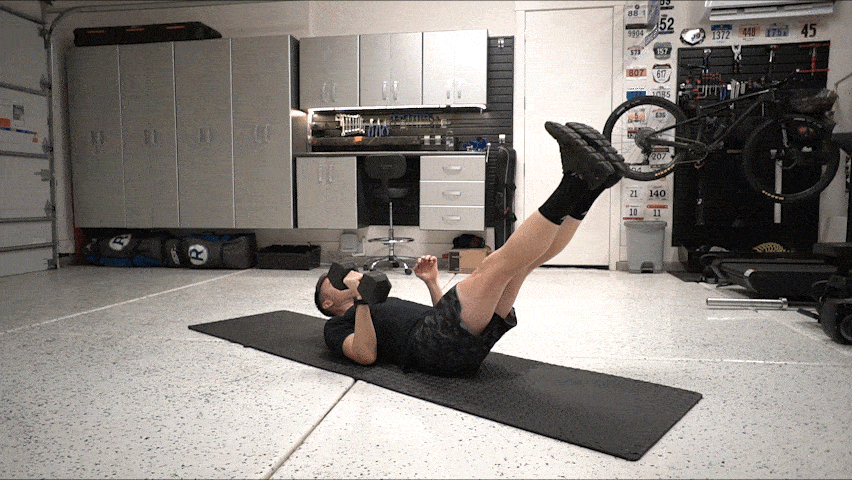
Raise your legs off the floor and tilt the pelvis upward. Bring your shoulders off the floor to engage your core. As you press the weight, resist lower body movement as much as possible. While Jonathan is doing this on the floor, you can do it on a bench to increase your range of motion.
Single-Arm Dumbbell Glute Press
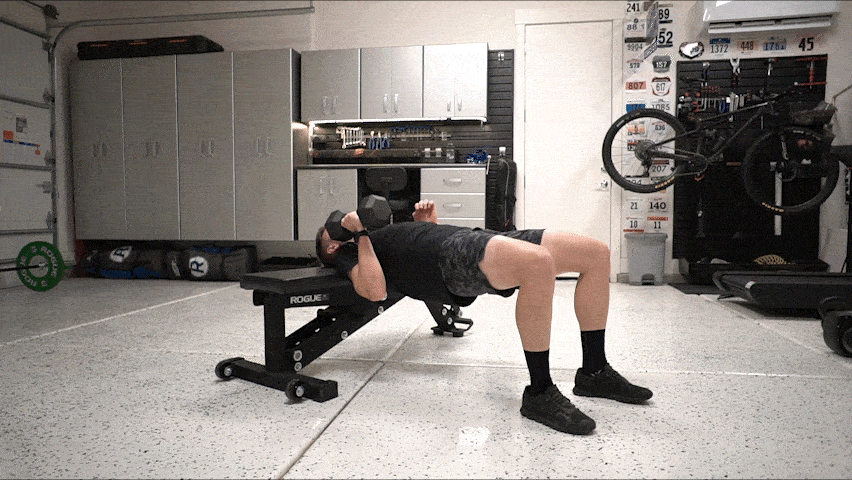
A great one for cyclists, this exercise activates the posterior, including the glutes and hips. The width of your stance will influence which muscle groups are working the hardest. Placing your feet together emphasizes the hips and requires more stability.
Kettlebell Gorilla Rows
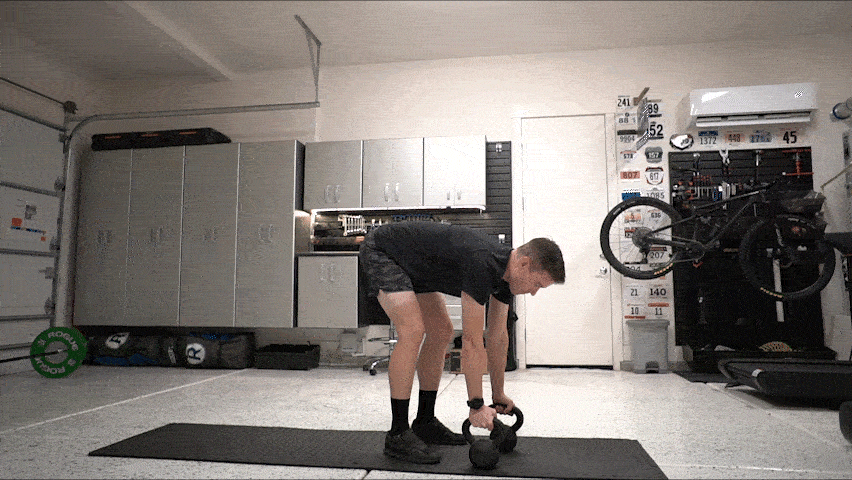
These rows are an excellent cycling-specific movement. Start with a slight bend in the knees, and hinge at the hips. Most importantly, keep a flat back to keep from compromising your lumbar position. For beginners, start with a 45-degree hinge angle.
Pendlay Row
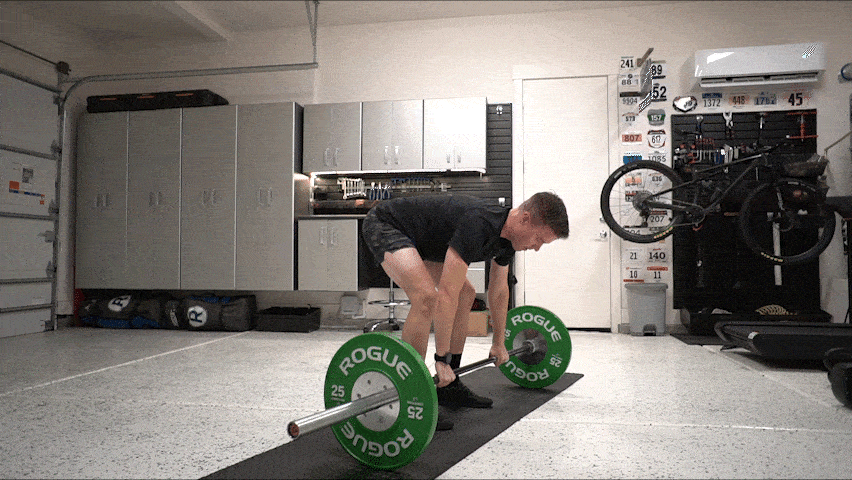
Very similar to the gorilla rows, this exercise is done with a barbell. The most important thing to emphasize is a safe hip hinge angle. Here, Jonathan demonstrates the move at a 90-degree bend, which is the maximum. To keep your back safe, feel free to stand a bit taller. Additionally, you can change your grip to get hyper-specific to the type of riding you do.
Rear Foot Elevated Bulgarian Split Squats
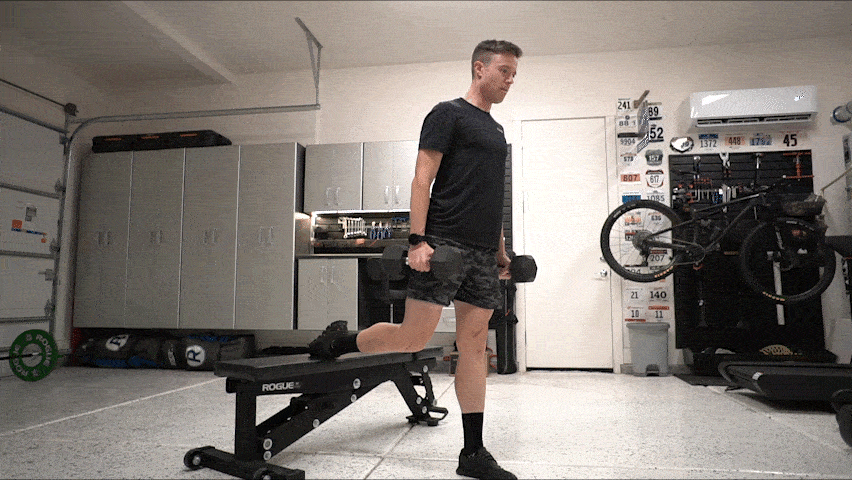
These squats are excellent for developing stability in the hips, knees, ankles, and feet. Coach Chad likes to call this movement the bread and butter of endurance strength training because there are so many benefits concerning flexibility, mobility, and strength. Just make sure to keep your knee from drifting over the toes on your foot.
Box Squats
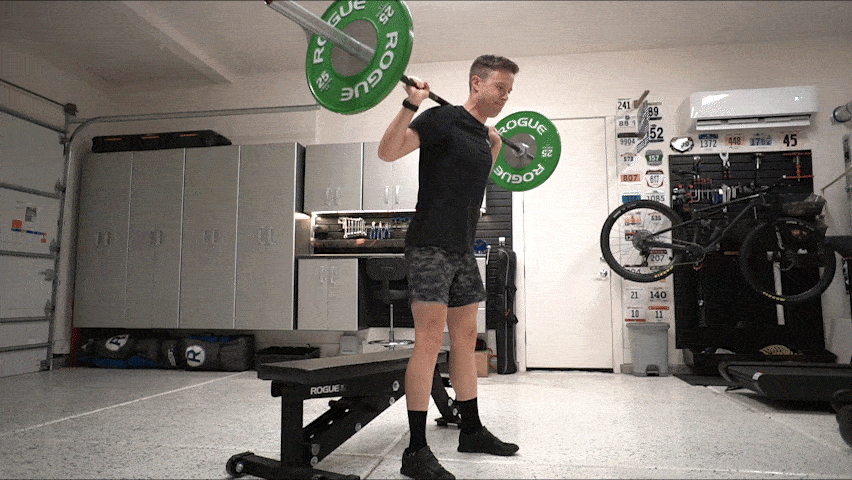
A classic movement, box squats pair nicely with your primary movements on the bike. Before loading on weight, focus on your range of motion and perfect your form.
Single-Leg Dumbbell Deadlift.
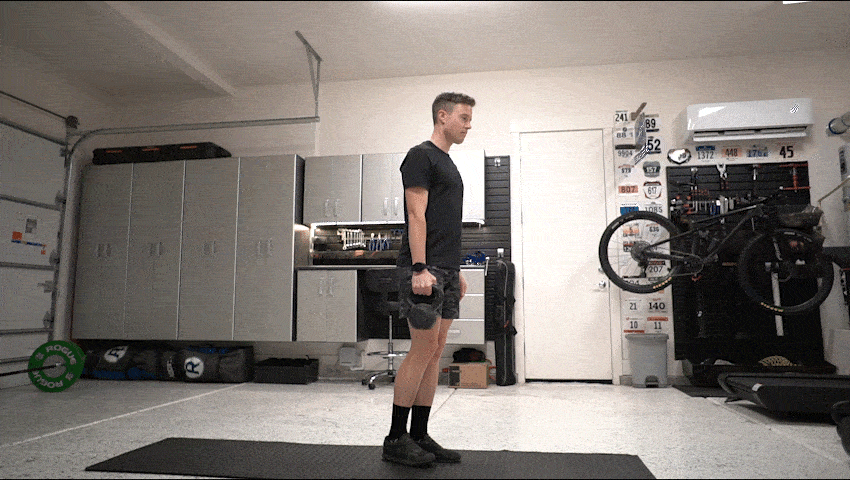
Single-leg deadlifts are excellent if you are prone to injury with deadlift motions. Keep a long-standing leg with only a subtle bend and a flat back. In this example, Jonathan is doing it crossbody. Holding the weight standing-leg side will make it easier to stabilize.
Single-Leg Hip Thrusts
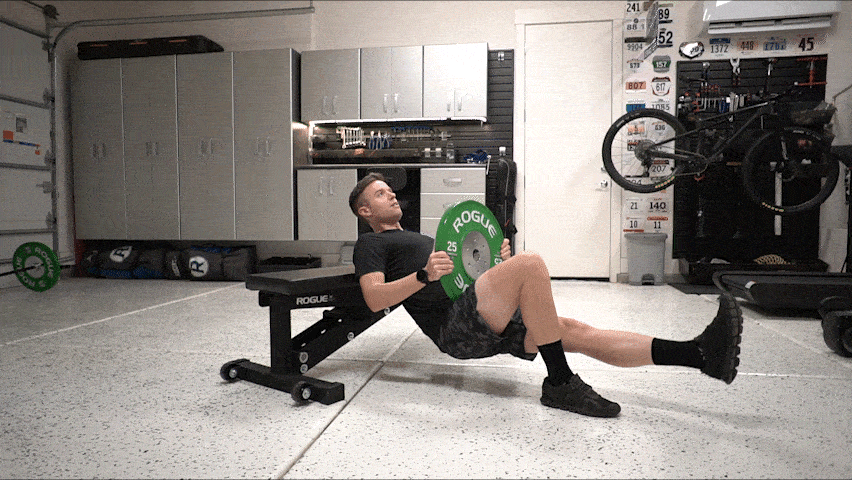
Single-leg hip thrusts can be challenging using just your bodyweight. Foot placement can change the exercise noticeably. If you pull the foot more toward the rear, you’ll work the hamstring more. Shifting the foot outward will emphasize the glute.
5 Tips For Getting Started
Getting started with any new kind of training can seem daunting, and strength training is no exception. These five tips can help you get started with your offseason strength training.
1. Start Slowly
When you start, it’s best to do so slowly. If you’re new to resistance training, start with bodyweight exercises. This will help you hone in on your form and prepare your joints for additional weight later on. Aim to do these two or three times a week.
As a bonus, you’ll need little to no equipment for these exercises. Check out the video above for five exercises that you can do at home.
2. Keep It Short and Simple
As a cyclist, you don’t need to spend hours in the gym to reap the benefits. Not only is it easier to maintain consistency, but you can also increase the duration as you adapt. To help keep things simple, focus on four main categories of movements—press, pull, squat, and hinge.
3. Train Movements, Not Muscles
Strength training for endurance athletes is markedly different than bodybuilders. Our primary objective is functional strength. This means using exercises that favor the entire body, not one specific muscle group—think rows instead of bicep curls.
4. Guide Your Overall Workload
Overdoing strength training leads to many undesirable outcomes. Let fatigue and fear of injury guide your overall workload. In the beginning, be conservative to avoid setbacks.
5. Set Goals
Before you jump into the gym, it’s a great idea to set some goals to guide your training. To help, we’ve created cycling-specific strength training benchmarks. Coach Chad developed these benchmarks with three types of cyclists in mind—climber, all-rounder, and sprinter.
These benchmarks are for endurance athletes concerned with enhancing their endurance capabilities, improving their basic quality of movement in day-to-day life, decreasing their likelihood of crash-related injuries, and decreasing their odds of bone mass loss. You can use the Strength Training Calculator to get a list of goals.
For more cycling training knowledge, listen to Ask a Cycling Coach — the only podcast dedicated to making you a faster cyclist. New episodes are released weekly.
